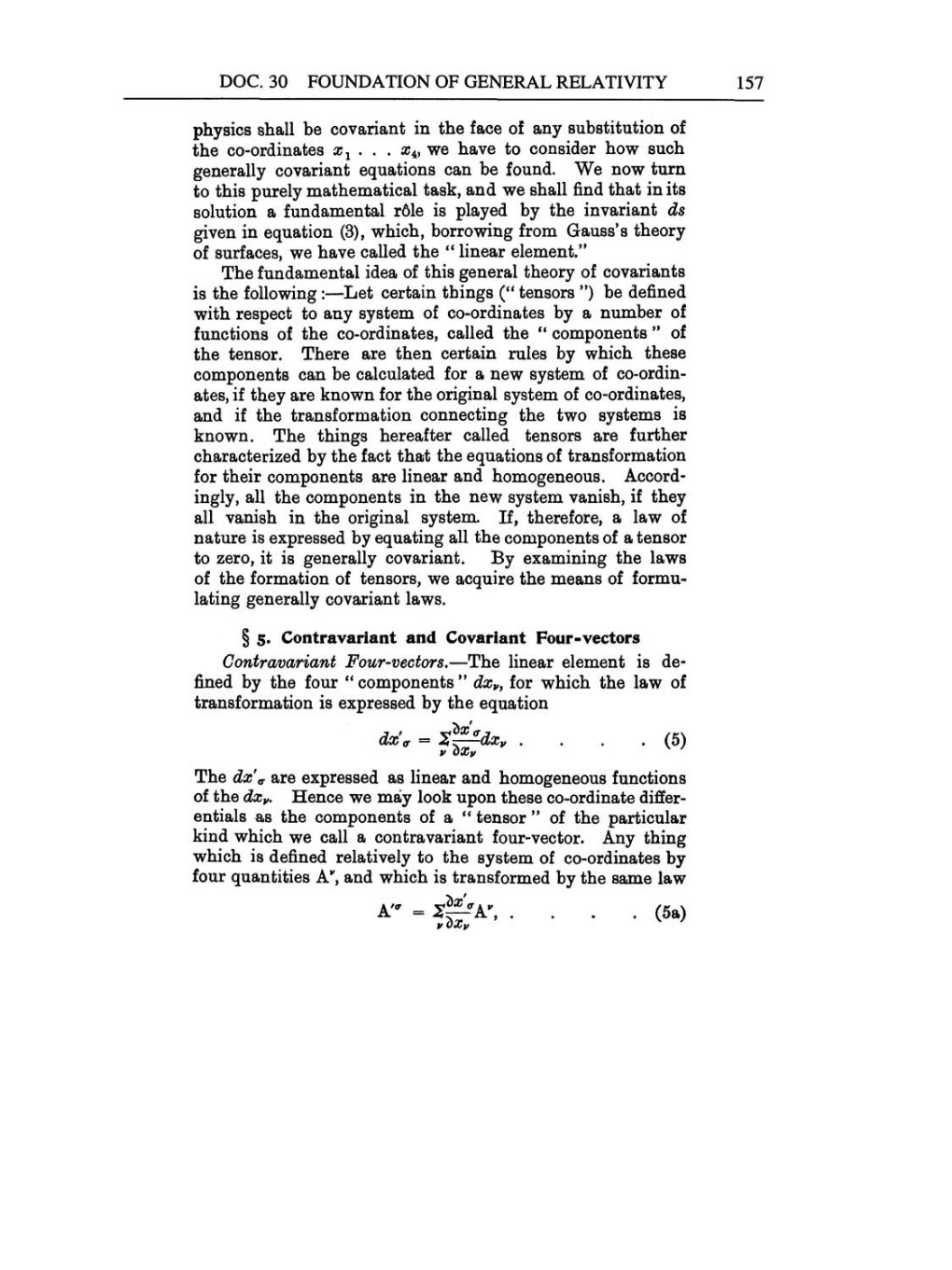DOC. 30 FOUNDATION OF
GENERAL RELATIVITY
157
physics
shall
be
covariant in the
face of
any
substitution of
the
co-ordinates
x1
...
x4,
we
have
to
consider how
such
generally
covariant
equations
can
be found. We
now
turn
to
this
purely
mathematical
task,
and
we
shall find
that
in
its
solution
a
fundamental role is
played by
the invariant
ds
given
in
equation
(3),
which,
borrowing
from Gauss's
theory
of
surfaces, we
have
called
the
"linear
element."
The fundamental idea
of
this
general
theory
of
covariants
is
the
following
:-Let
certain
things
("tensors") be
defined
with
respect
to
any system
of
co-ordinates
by a
number
of
functions
of
the
co-ordinates,
called
the
"components"
of
the
tensor.
There
are
then certain
rules
by
which
these
components
can
be calculated for
a
new
system
of co-ordin-
ates,
if
they
are
known
for
the
original system
of
co-ordinates,
and if
the transformation
connecting
the two
systems
is
known. The
things
hereafter
called tensors
are
further
characterized
by
the fact that
the
equations
of
transformation
for
their
components
are
linear
and
homogeneous.
Accord-
ingly,
all
the
components
in the
new
system vanish,
if
they
all
vanish in
the
original system.
If,
therefore,
a
law of
nature is
expressed by
equating
all
the
components
of
a
tensor
to
zero,
it
is
generally
covariant.
By examining
the
laws
of
the formation
of tensors,
we
acquire
the
means
of formu-
lating generally
covariant
laws.
§
5.
Contravariant and
Covariant
Four-vectors
Contravariant Four-vectors.-The linear element
is de-
fined
by
the four
"components" dxv,
for
which the
law of
transformation
is
expressed by
the
equation
dx'o
vdxv
.
(5)
The
dx'o
are
expressed
as
linear and
homogeneous
functions
of
the
dxv.
Hence
we
may
look
upon
these co-ordinate differ-
entials
as
the
components
of
a
"tensor"
of the
particular
kind which
we
call
a
contravariant
four-vector.
Any
thing
which
is
defined
relatively
to
the
system of
co-ordinates
by
four
quantities
Av,
and
which
is transformed
by
the
same
law
Aio
=
. vdxv .
(5a)
